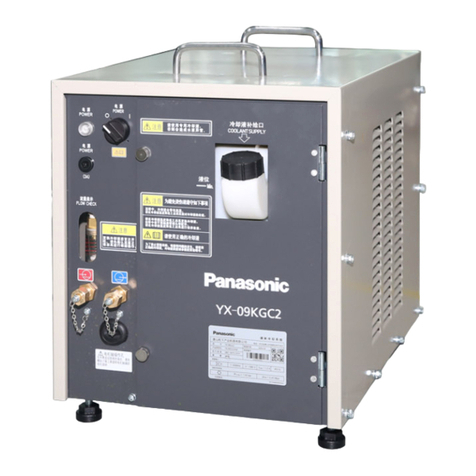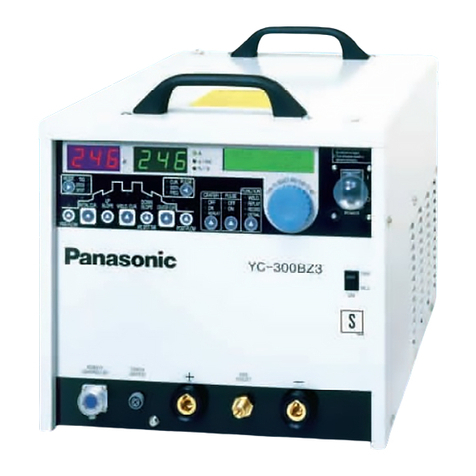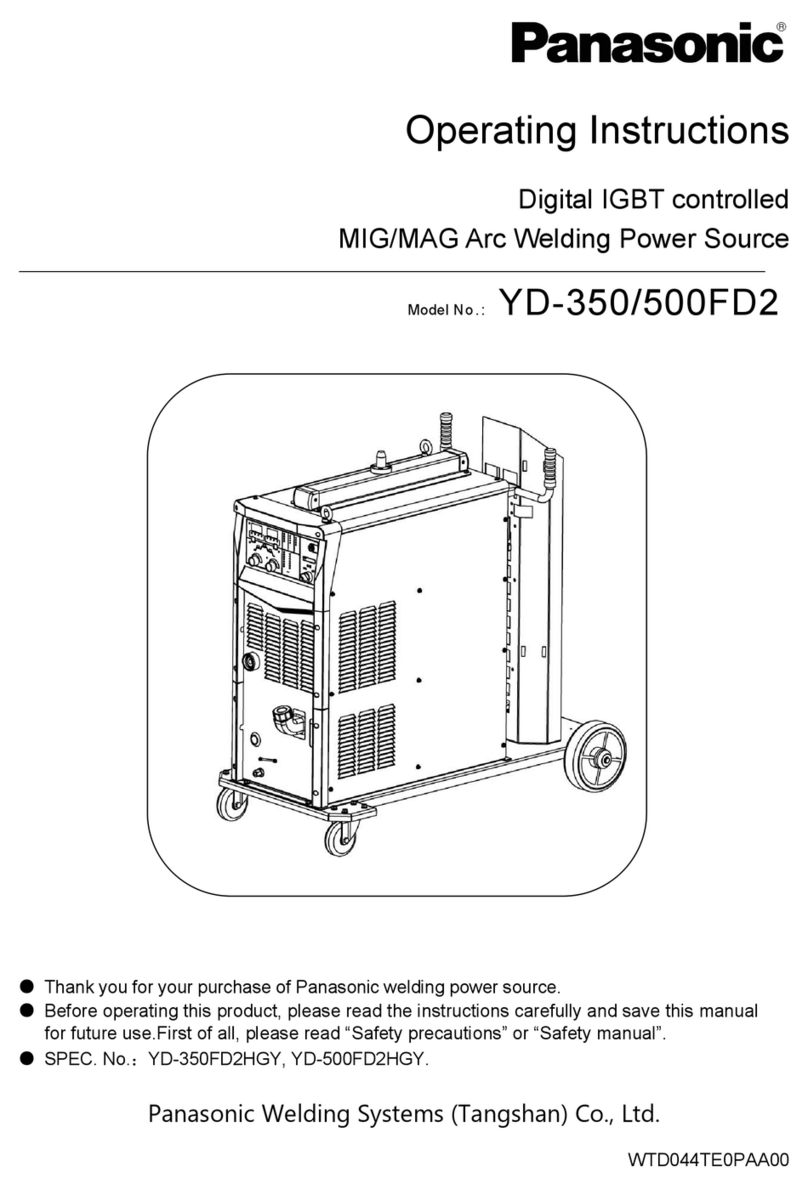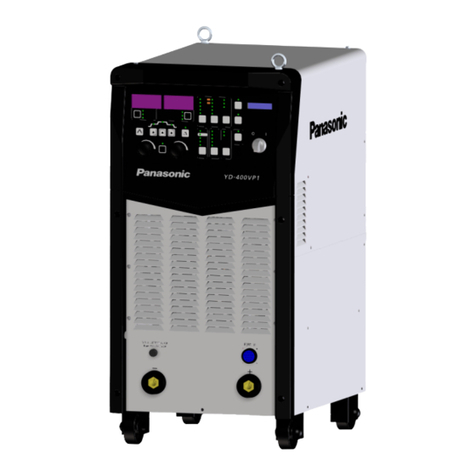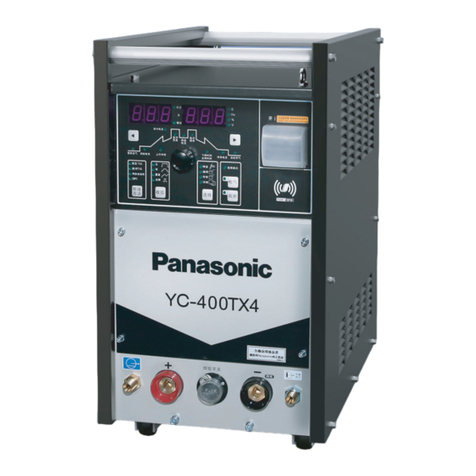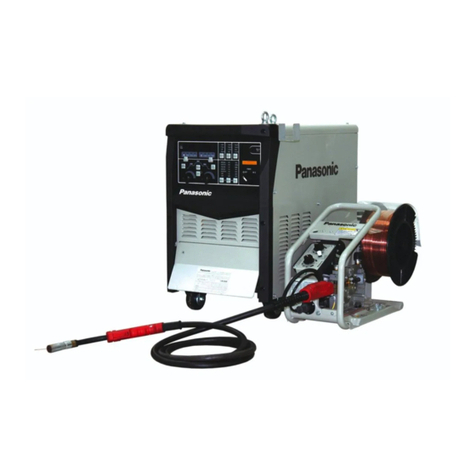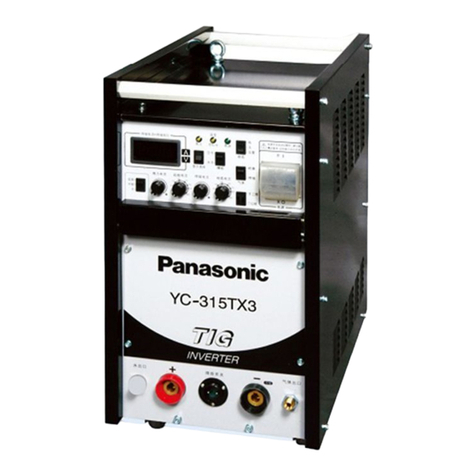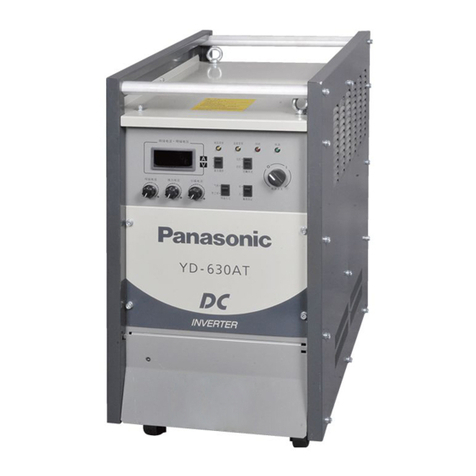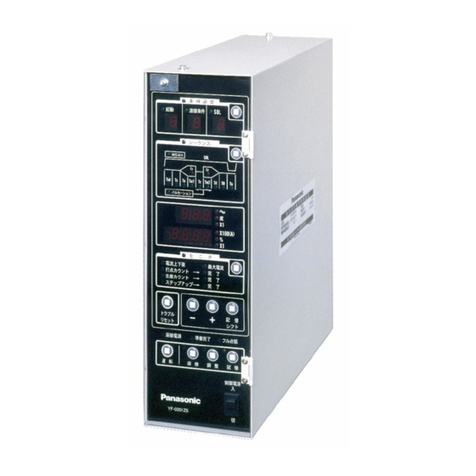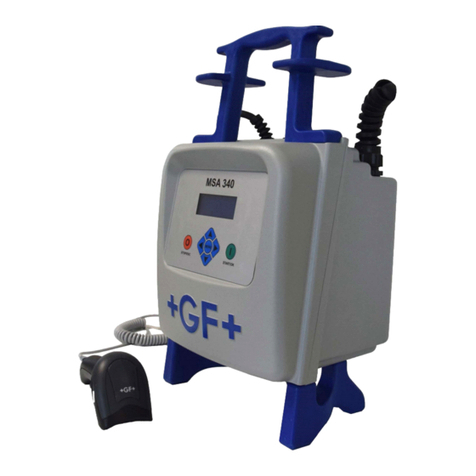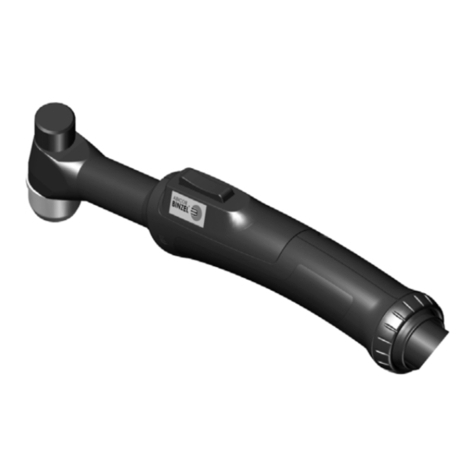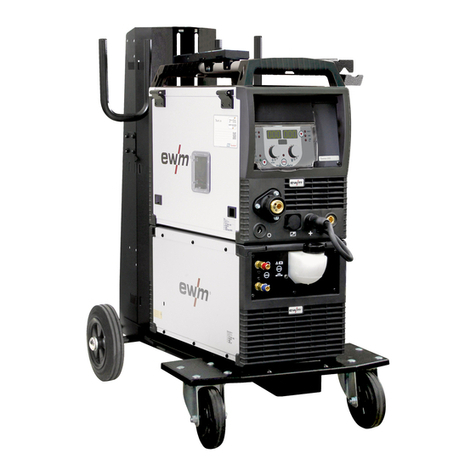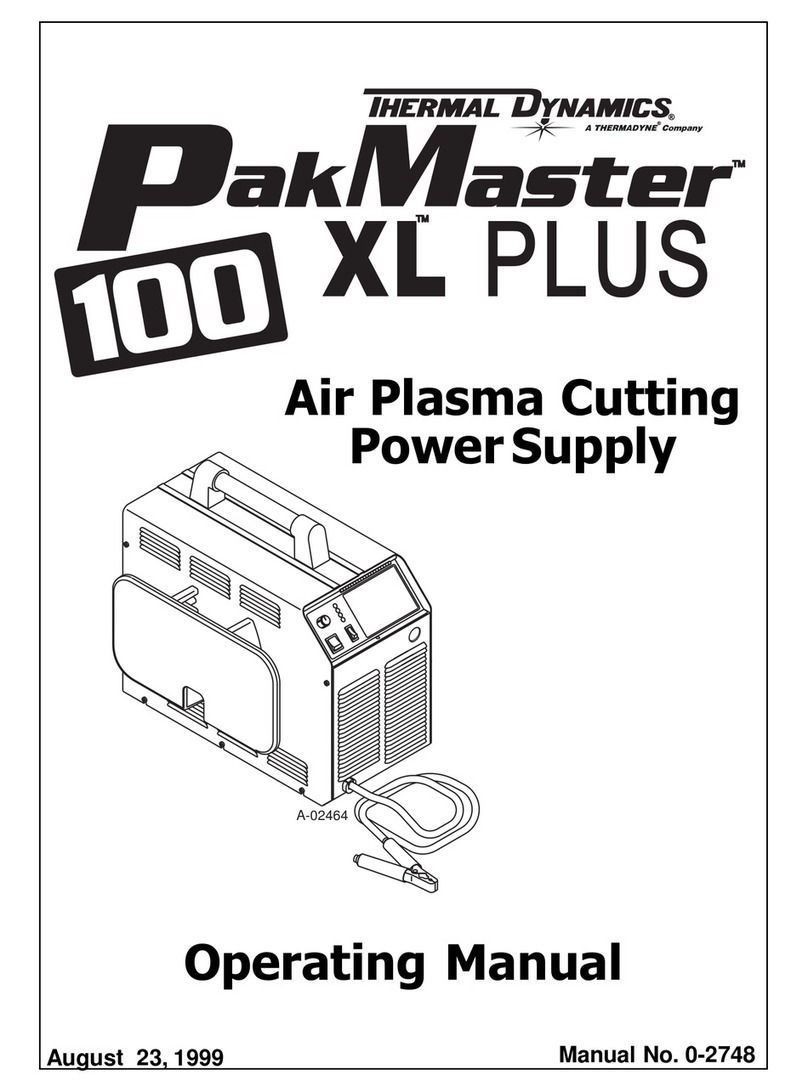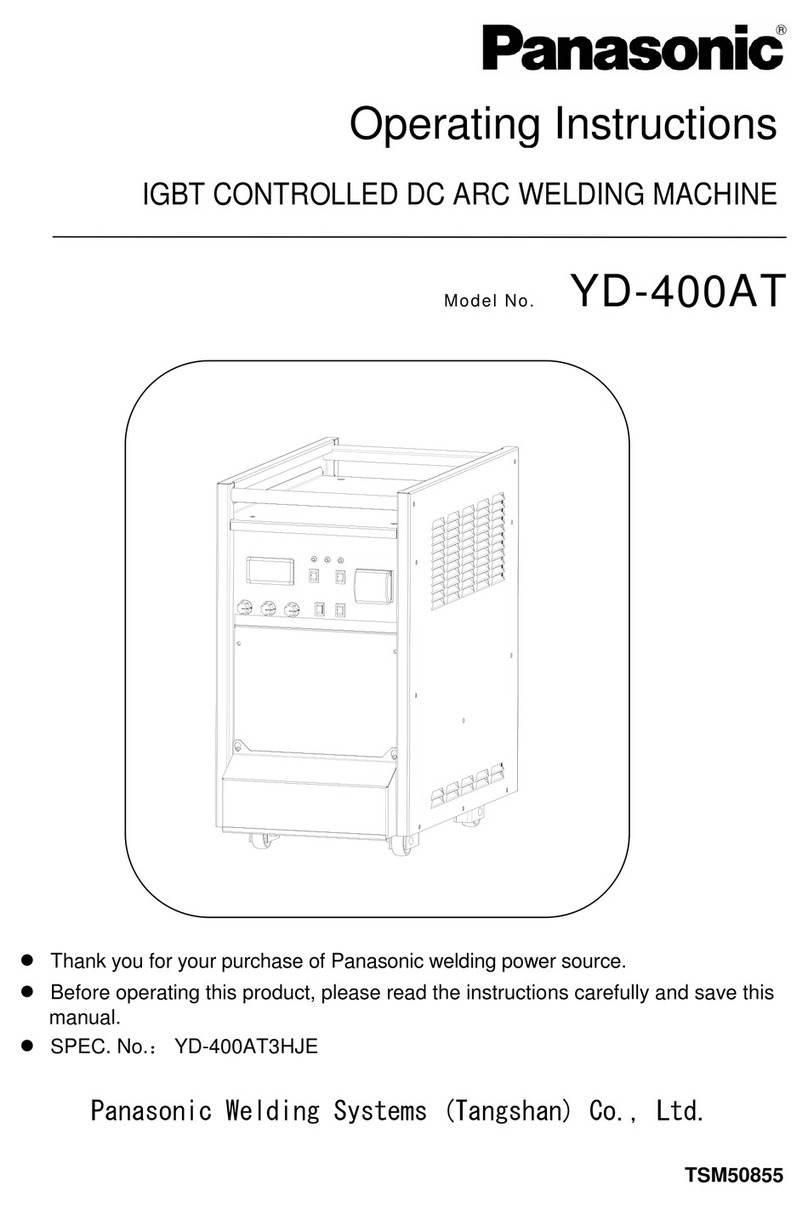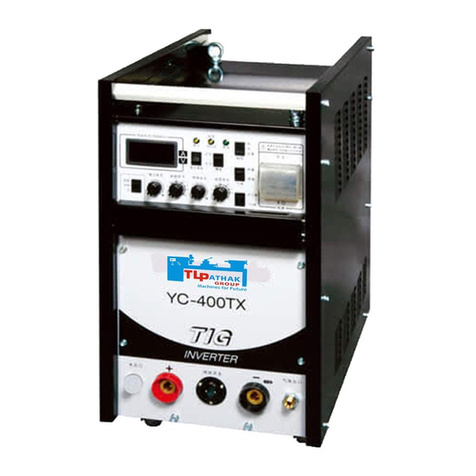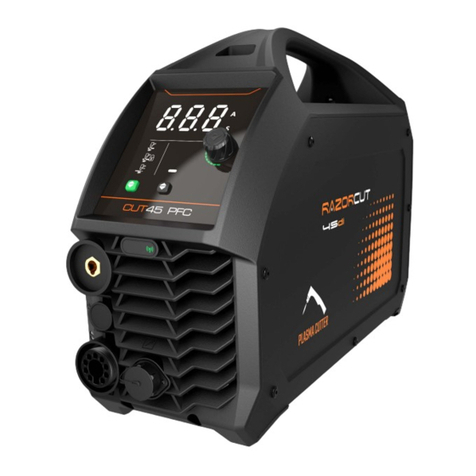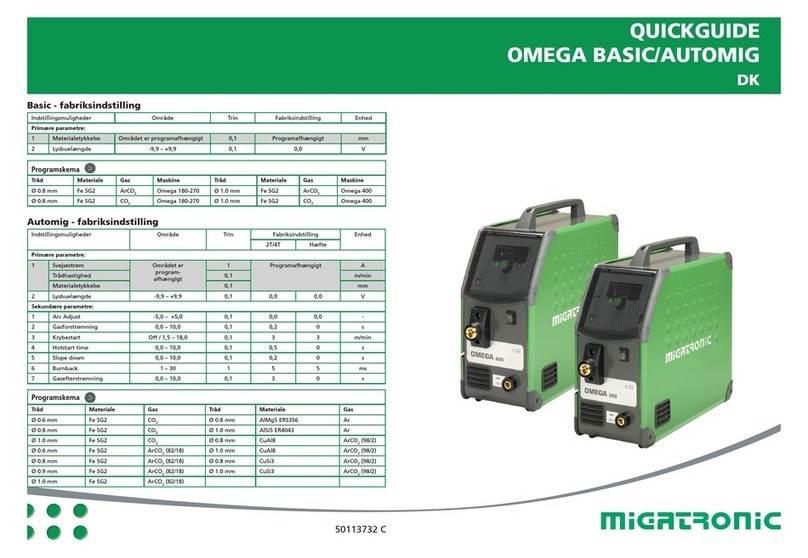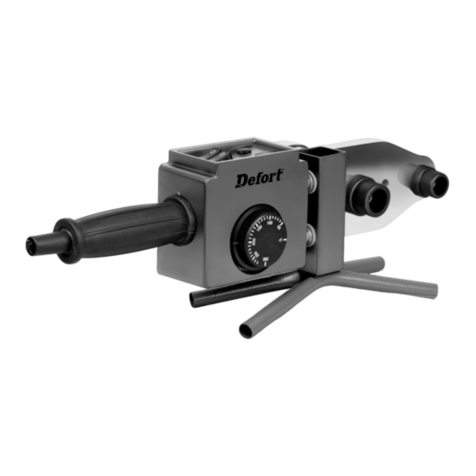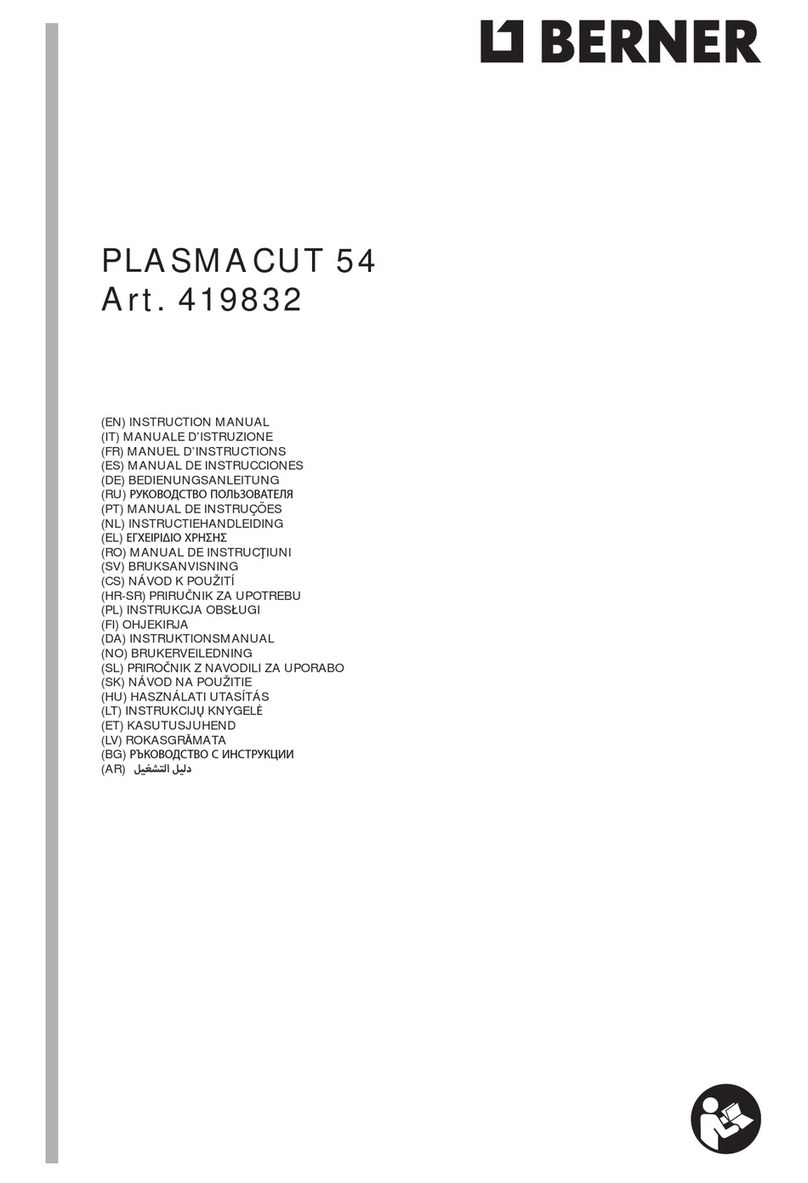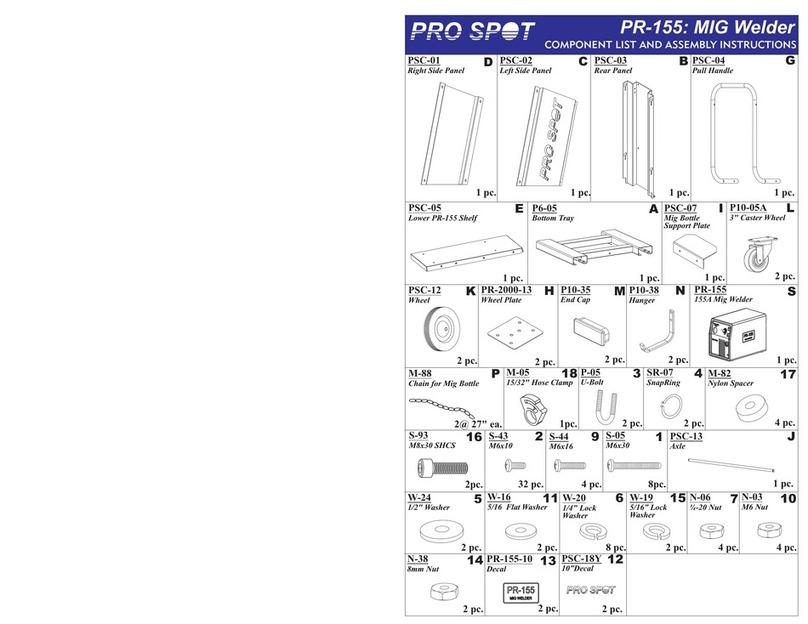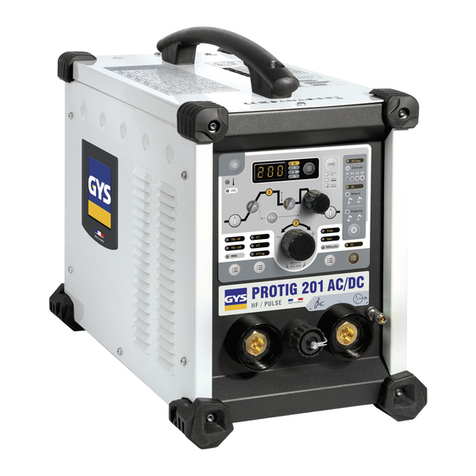
OMCTT5639E09 5
Table of Contents
Introduction ............................................2
1. About safety........................................6
1.1 Safety precautions....................................6
2. Rated Specifications ..........................8
2.1 Standard accessories...............................9
2.2 Duty cycle ..................................................9
2.2.1 Dimensions ..................................................10
3. Installation.........................................11
3.1 Installation siter ......................................11
3.2 Power supply equipment .......................11
3.3 Transportation.........................................12
3.4 Configuration ..........................................13
3.4.1 When using the special air-cooling torch .....13
3.4.2 When using the special water-cooling torch 13
3.5 Peripheral equipment (Optional items).14
3.5.1 TIG Welding torch........................................14
3.5.2 Ground ring assembly (CWX00560)............ 15
3.5.4 Argon gas regulator (YX-251A) ...................17
3.5.5 Cooling water unit and cooling water...........17
3.5.6 Potentiometer-type remote control unit (YC-
30BPR1,YC-30BMR1) ................................. 17
3.5.7 External equipment connection unit (YX-CB009)
.....................................................................17
4. Names and Functions ......................18
4.1 Front panel ..............................................18
4.1.1 Data display/setting section and welding condi-
tions selecting section..................................18
4.1.2 Welding conditions setting buttons section.. 19
4.1.3 Switches and rear side ................................20
4.2 Welding methods and output waveform
...................................................................21
4.3 Welding conditions.................................22
4.3.1 Welding condition setting table ....................22
4.3.2 About welding conditions .............................22
5. Connection........................................25
5.1 Connecting output cables......................25
5.1.1 About output cables (Below figures are images)
.....................................................................25
5.2 Input and ground (PE) cable connection
...................................................................26
5.3 Connecting gas regulator ......................27
5.3.1 Connecting procedures................................27
5.4 Connecting with jig(s) ............................28
5.4.1 Applications .................................................28
5.4.2 Position of jig terminal.................................. 28
5.4.3 Cautions at wiring ........................................28
5.4.4 Functions of jig terminal............................... 29
5.5 Connecting with Robot...........................29
5.5.1 Applications .................................................29
5.5.2 Connection................................................... 29
5.5.3 Cautions at connecting cables.....................29
5.6 Connecting with external device connect-
ing unit......................................................30
5.6.1 Applications..................................................30
5.6.2 Connection...................................................30
6. Operation.......................................... 31
6.1 Preparation steps ...................................31
6.1.1 Use of protective equipment ........................31
6.1.2 Confirmation of completed connection.........31
6.1.3 Turning ON power........................................31
6.1.4 Adjusting gas flow rate.................................31
6.2 Steps after welding operation ...............32
6.2.1 Shutting off Gas ...........................................32
6.2.2 Shutting off power........................................32
6.2.3 Precautions for winter season (when using the
water-cooling torch) .....................................32
6.3 Settings ...................................................33
6.3.1 Factory settings............................................33
6.3.2 How to change settings................................34
6.3.3 How to restore the original factory setting of this
product.........................................................34
6.3.4 Memory deletion ..........................................35
6.3.5 Memory lock.................................................36
6.3.6 Setting and checking welding conditions .....36
6.3.7 Storing welding conditions ...........................37
6.3.8 Reproducing welding conditions ..................38
6.4 Welding operation ..................................39
6.4.1 “No Crater”...................................................39
6.4.2 ”Crater”.........................................................39
6.4.3 “Crater repeat” .............................................40
6.4.4 “SPOT”.........................................................40
7. Maintenance and inspection........... 41
7.1 Daily check..............................................41
7.2 Periodic check ........................................42
7.2.1 Check guideline ...........................................43
7.2.2 [Time period for which customers-set conditions
can be maintained] ......................................43
7.3 Precautions in performing withstand volt-
age test and insulation resistance measure-
ment .......................................................... 44
7.3.1 Test preparation...........................................44
7.3.2 After the test completes ...............................45
8. Troubleshooting .............................. 46
8.1 Error codes and messages....................46
8.2 Troubleshooting table............................48
9. Parts list............................................ 49
10. Circuit diagram .............................. 53
10.1 Enlarged (left half) ................................54
10.2 Enlarged (right half) .............................55
11. Appendix ........................................ 56
11.1 Welding conditions table .....................56
11.1.1 TIG welding conditions table (Reference)..56
11.1.2 Tungsten welding rod.................................58
11.1.3 TIG welding shield gas...............................58
11.1.4 Filler wire....................................................58
11.2 Welding conditions memorandum......59
11.3 Program list...........................................60
12. Information on Disposal................ 61

